Understanding Skateboard Decks and Grip Tape Essentials
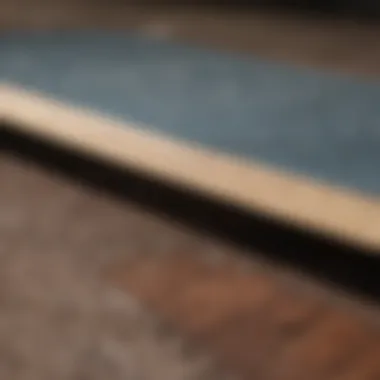
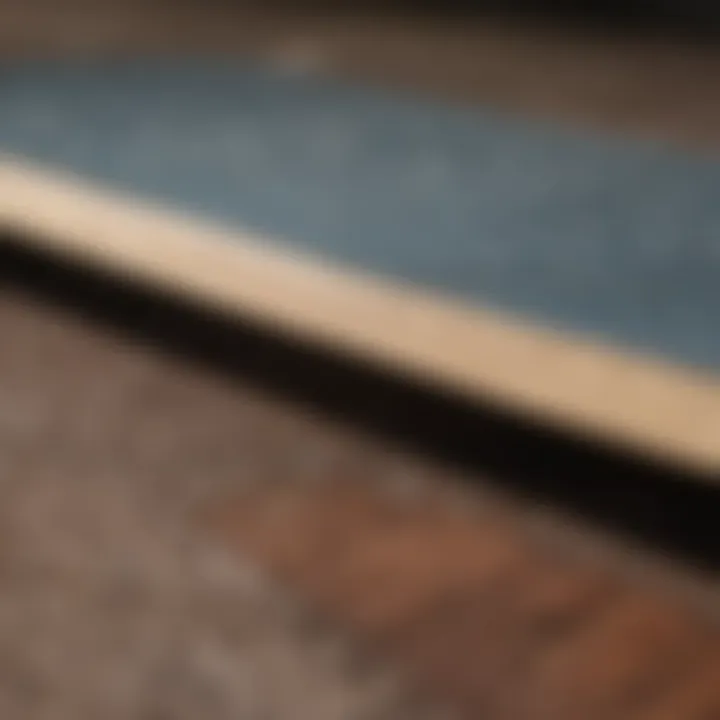
Intro
Skateboarding is an exhilarating sport that has captivated countless enthusiasts around the globe. At the heart of this activity lies the skateboard deck, a crucial component that significantly impacts performance. An often-overlooked aspect of this is grip tape, which plays an essential role in ensuring safety and control.
In this article, we will explore the various materials involved in skateboard deck construction. We will also analyze the function of grip tape, delving into its advantages for skaters. Ultimately, this piece aims to guide you through the process of selecting the ideal skateboard deck and grip tape tailored to your needs.
By gaining a thorough understanding of these components, you can enhance your overall skating experience while making informed choices about your equipment.
Techniques and Tips
Skill Development
To become proficient in skateboarding, one must first understand the mechanics of the board. Focusing on stance, weight distribution, and balance is crucial. Practice regularly on a flat surface to gain comfort with your deck. This foundational skill set will assist in executing more complex tricks. Focus on gradual progression to develop confidence without overwhelming yourself.
Practical Techniques
One practical technique that many skaters find useful is understanding how to maintain grip tape. Keeping it clean will enhance your performance. Dirt can accumulate and affect grip, so regularly clean it with a damp cloth. Additionally, learning how to apply grip tape correctly is vital. A smooth application helps prevent bubbles and ensures better contact with shoes.
Common Mistakes to Avoid
Many beginners often underestimate the importance of choosing the right skateboard deck size. This can affect stability and comfort. Additionally, neglecting safety gear can lead to injuries. Another common mistake is not paying attention to weight distribution when performing tricks. Being aware of your body positioning will aid in achieving better control and prevent falls.
Gear and Equipment
Essential Gear for Beginners
When starting out, it is important to invest in a few essential items. A good-quality skateboard deck, suitable shoes, and a reliable helmet should be the minimum. Each of these items contributes to your overall safety and performance on the board. While you may be tempted to prioritize aesthetics, functionality should always come first.
Latest Innovations and Trends
In recent years, skateboarding gear has seen various technological upgrades. New materials in deck construction, such as bamboo and carbon fiber, have enhanced durability while remaining lightweight. Furthermore, grip tape now comes in different textures, allowing skaters to select the perfect balance between slip resistance and feel.
Reviews and Comparisons
Before purchasing, research is essential. Look for reviews that compare different skateboard decks and grip tapes. Websites like Reddit can offer user experiences and advice. Many skaters share their insights on specific brands and products that align with individual skating styles.
Safety Measures
Essential Safety Gear
To ensure a safe skating experience, proper safety gear is non-negotiable. This typically includes helmets, knee pads, elbow pads, and wrist guards. Investing in quality gear can mitigate the consequences of falls or accidents.
Best Practices for Safe Participation
Skating in designated areas is advisable. Avoid crowded spaces or uneven surfaces where the risk of injury is higher. Moreover, practicing tricks in a controlled environment can help you build skills while minimizing hazards.
Injury Prevention and Management
Familiarizing yourself with common skateboarding injuries will enable you to take preventive measures. Learn about sprains, fractures, and abrasions. Stretching before and after skating can help maintain flexibility and prevent pulls or strains.
"Safety should always come first. High-quality gear can save you from unavoidable incidents."
Spotlights on Extreme Sports
Featured Sport of the Month
Each month, we will highlight a different extreme sport related to skateboarding. This could include freestyle BMX or inline skating, showcasing the similarities and differences between them.
Profiles of Prominent Athletes
Focusing on the leading figures in the skating world can be inspiring. Athletes like Tony Hawk and Nyjah Huston have set high standards in the sport, showcasing the potential heights one can reach with dedication and skill. Their individual journeys often offer invaluable lessons for aspiring skaters.
By exploring these topics, this article aims to provide a comprehensive overview of skateboard decks and grip tape, underscoring the importance of informed choices in this thrilling sport.
Foreword to Skateboard Decks and Grip Tape
Skateboarding is not merely a sport; it's a culture, a lifestyle, and a means of expression for millions around the globe. At the core of this exhilarating experience is the skateboard deck. Understanding the components of skateboard decks and the grip tape affixed to them is essential for anyone serious about the sport. This section sets the stage for a deeper exploration of how these elements work together to enhance performance and safety.
A skateboard deck serves as the foundation of the board. It is more than just a flat surface for standing; it determines how a skateboard functions with various materials and shapes. On the other hand, grip tape plays a vital role in ensuring the rider remains stable and controlled while maneuvering. Together, they are pivotal in crafting a reliable and enjoyable experience.
Defining Skateboard Decks
Skateboard decks are typically made from layers of wood, primarily maple, which provides a combination of strength and flexibility. The deck's construction influences its weight, shape, and overall durability. It can be seen as the heart of the skateboard. Without a sturdy deck, performance suffers significantly. When evaluating a skateboard deck, important factors include its width, length, and concave shape. Each element can affect how tricks are performed and how comfortable the ride feels.
What is Grip Tape?
Grip tape is a textured sheet that adheres to the top surface of the skateboard deck. Its primary function is to provide traction. Without grip tape, riders would struggle to maintain their footing, especially during tricks and high-speed rides.
This adhesive material comes in various thicknesses and grits, allowing riders to choose according to their preferences. The grip tape may also display artistic designs, providing not only functionality but also a way for skaters to express their style. The choice of grip tape can have a notable impact on the skater’s performance and comfort.
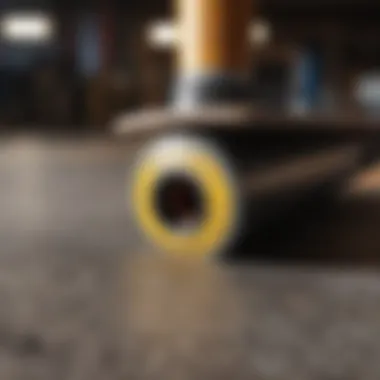
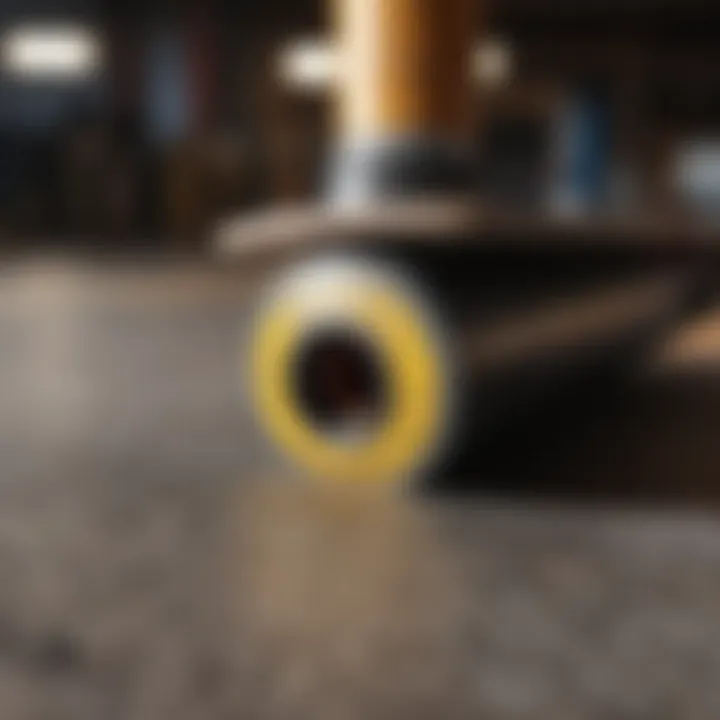
"Grip tape is essential for achieving optimal performance on the skateboard by ensuring control and safety during rides."
To summarize, understanding the intricacies of skateboard decks and grip tape paves the way for improved skating activities. Knowledge on these components allows skateboarders to make informed decisions about gear, enhancing both safety and performance.
Components of a Skateboard Deck
Understanding the components of a skateboard deck is essential for anyone looking to enhance their skating experience. Each element, from materials to shape, plays a crucial role in how the board performs. Selecting the right components can significantly affect one’s riding style, comfort, and overall enjoyment. This section explores the various materials utilized in deck construction as well as the shape and size variations that can tailor a skateboard to individual preferences.
Materials Utilized in Deck Construction
The materials chosen for skateboard decks have a substantial impact on their durability, strength, and performance. Three common materials include maple, bamboo, and plastic, each offering distinct advantages and some drawbacks.
Maple
Maple is the most popular choice for skateboard decks. It is known for its strength and rigidity. This material provides excellent pop, which is essential for tricks. Its sturdy nature allows it to withstand heavy impacts. A key characteristic of maple is its ability to maintain structure over time, making it a reliable option. However, it can be heavier than other materials, which some skaters may find a disadvantage when performing high-flying tricks.
Bamboo
Bamboo has gained popularity for its lightweight properties. It is an eco-friendly choice, appealing to environmentally conscious skaters. The flexibility of bamboo contributes to a smooth ride, making it ideal for cruising. The unique feature of bamboo is its resilience; it can absorb shocks better than most materials. A disadvantage might be that it does not provide the same level of pop as maple, which could affect performance in technical tricks.
Plastic
Plastic decks serve a different niche. They are often lighter than wood alternatives and can be more durable against weather elements. Plastic can also come in various colors, appealing to skaters who wish to customize their gear. However, a drawback is that plastic decks might not deliver the same level of responsiveness that wood provides, making them less desirable for advanced tricks.
Shape and Size Variations
The shape and size of a skateboard deck influence how it responds to the skater's movements. Variations exist to cater to different riding styles and preferences. Two main aspects to consider are concave types and width/length options.
Concave Types
Concave refers to the shape of the deck's surface. Different concave types can enhance control and facilitate various maneuvers. A deeper concave increases grip and foot placement security, benefiting tricks that require precise landings. On the other hand, a flatter concave might appeal to those who prefer stability and smooth riding at high speeds. Each type has its advantages and should cater to the skater's specific needs.
Width and Length Options
Width and length options are also crucial when selecting a skateboard deck. Wider decks provide a stable platform, suitable for beginners or skaters preferring the tricks that require a larger landing area. Conversely, narrower decks can facilitate technical tricks allowing for quick foot movements. Length options affect how the board feels during rides. Longer boards often offer better control at higher speeds while shorter boards enhance maneuverability. Choosing the right dimensions can significantly improve the skater's experience.
"The right deck material and size can transform how a skater interacts with the board, enhancing both comfort and performance."
In summary, the components of a skateboard deck significantly influence performance and style. Understanding materials like maple, bamboo, and plastic, along with variations in shape and size, allows skaters to make informed decisions tailored to their needs. A thorough comprehension of these factors is vital in creating an optimal riding experience.
The Role of Grip Tape
Grip tape is an essential component of a skateboard deck. Its primary function is to enable skaters to maintain control of their board during tricks, turns, and any moves they perform. By creating a textured surface, grip tape enhances traction between the skater's shoes and the deck. This added friction helps prevent slips and falls, making it a crucial aspect of both performance and safety in skateboarding.
Grip tape serves multiple functions that a savvy skater should understand. It allows for more precise foot placement and helps improve overall riding comfort. The right grip tape can also enable riders to execute tricks with more confidence. A secure footing allows for better landings after jumping and flips, reducing the likelihood of injury. There are various types of grip tape, each with unique textures that cater to different styles and preferences.
Enhancing Traction
One of the primary reasons grip tape is used is for its ability to enhance traction. The textured surface of grip tape provides the necessary grip that skaters rely on to maneuver effectively. The roughness of the grip tape also plays a significant role in how a skateboard reacts in various conditions. The slight abrasive feel increases the friction between the foot and the board, allowing skaters to feel more grounded.
When it comes to grip tape, consistency is key. High-quality grip tape can offer superior traction, while lower-quality options may wear down quickly, reducing grip over time. Riders should choose grip tape based on their riding style. For example, a skater who focuses on street tricks might prefer a more aggressive grip tape, while someone who rides mainly in parks may benefit from a smoother surface.
Safety Considerations
Safety is a paramount concern for skaters, and grip tape plays a vital role in ensuring that skaters remain secure on their boards. Without adequate grip tape, the risk of slipping increases, which can lead to serious injuries. It is not merely an accessory; it serves as a first line of defense against falls.
There are several factors to consider when choosing grip tape with safety in mind. The thickness and texture of the grip tape can influence overall traction and comfort. Additionally, weather conditions can affect performance. For instance, when riding in wet or damp conditions, the grip tape may lose effectiveness, making it essential for skaters to be aware of their surroundings and tread cautiously.
In summary, the role of grip tape cannot be underestimated in skateboarding. It offers both performance advantages and safety assurances. By selecting the right type of grip tape and maintaining it properly, skaters can enhance their riding experience and minimize risks.
Grip Tape Variants
Grip tape is essential for a skateboard's performance. It gives skaters the control they need. When selecting grip tape, understanding different variants helps make the right choice. These variants have specific features that impact usage, traction, and style. Knowing them is important for any skater.
Types of Grip Tape Available
Standard Grip Tape
Standard grip tape is the most common choice among skateboarders. Its rough surface provides a strong grip that enhances control during skating. The grain structure of this grip tape is designed to offer adequate friction without being overly abrasive. This makes it a friendly option for beginners and experienced skaters alike. The primary advantage of standard grip tape is its balance between grip and comfort.
However, while it supports stability during tricks, it might wear down quicker in harsh conditions compared to some specialized types. It is usually available in black but can come in other colors as well, making it versatile for any skateboard aesthetic.
Finer Grit Grip Tape
Finer grit grip tape has a smoother texture. It is ideal for skaters who prioritize board feel and technical tricks. The unique aspect of finer grit is that it allows easier foot movement while maintaining grip. This makes it a popular choice for street skaters and those involved in technical skating.
While it offers excellent maneuverability, the trade-off is that it may not provide as much grip during aggressive riding. Therefore, selecting finer grit depends largely on an individual’s skating style and preferences.
Designs and Aesthetics
Graphic Design


Graphic design on grip tape adds a personal touch to a skateboard. It allows skaters to express their identity through images or patterns printed on the surface. These designs can range from simple logos to complex artworks. They help distinguish a skater's board and can enhance style points during sessions.
However, some skaters might find that graphic grip tapes can diminish traction slightly. This is due to the coating used in the printing process, which can affect grip performance. Balancing appearance with practicality is crucial.
Custom Artwork
Custom artwork takes personalization further. Skaters can collaborate with artists to create unique grip tape designs that reflect their personal style. This adds not only aesthetic value but also a connection to the board, making it feel more like an extension of the skater.
One challenge here is the cost, as custom options can be more expensive. Additionally, the grip level may vary based on how the artwork is applied. Overall, it elevates standard grip tape into something more meaningful and complete.
Selecting the right grip tape variant is essential for optimizing performance and expressing individuality on your board.
Choosing the Right Deck and Grip Tape Combination
Choosing the appropriate skateboard deck and grip tape is essential for optimizing your riding experience. It is not merely about aesthetics; the right combination can significantly influence performance, safety, and comfort. A mismatched deck and grip tape can lead to issues like decreased control or increased fatigue. Therefore, skaters must consider several elements when making their selection.
Assessing Riding Style
Riding style is a key determinant in selecting the right skateboard deck and grip tape. Skaters have diverse preferences, from cruising on smooth pavement to performing tricks in skate parks. Each style demands different features from a skateboard deck. For example, a street skater might prioritize durability and responsiveness, while a downhill skater needs stability at high speeds. Understanding your riding style allows you to make more informed choices when it comes to deck shape and grip tape texture.
Factors Affecting Selection
Experience Level
Experience level plays an important role in gear choice. Beginners may prefer a wider skateboard deck to enhance stability. This is because starting skaters benefit from a larger surface area that makes balancing easier. More advanced riders often gravitate toward narrower decks that offer better maneuverability. Therefore, it is crucial to assess your comfort and skill level when choosing the right board and grip tape combination.
Terrain Types
The type of terrain also has a significant impact on skateboard selection. Riders who frequent rough surfaces may need a sturdier deck, often constructed of materials that withstand wear. Conversely, those skating on smooth surfaces may not require the same level of durability, enabling a choice of lighter decks. Additionally, terrain greatly influences the type of grip tape needed. For instance, a skater navigating wet or slick conditions will benefit from high-traction grip tape that provides extra safety.
"Making informed choices about skateboard components is fundamental to enjoyable and safe riding."
In summary, assessing your riding style and considering your experience level and terrain types are essential steps in choosing the right skateboard deck and grip tape combination. These factors not only enhance performance but also improve safety and enjoyment for all skaters.
Installation of Grip Tape
The installation of grip tape is a critical process in preparing a skateboard for use. Proper grip tape application ensures the rider has the necessary traction during tricks and maneuvers. This section covers essential preparation steps and application techniques for grip tape, aiming to help both novice and experienced skaters enhance their deck's performance.
Preparation Steps
Deck Cleaning
Deck cleaning is a vital preliminary step in grip tape installation. A clean surface allows the grip tape to adhere better, leading to longevity and effectiveness. One key characteristic of proper deck cleaning is the removal of dust, dirt, and old adhesive residues. These elements can significantly reduce the grip tape's performance and make it prone to peeling.
Using isopropyl alcohol and a soft cloth or paper towel, thoroughly wipe the deck. This unique feature of using alcohol ensures a residue-free surface, enhancing adhesion. Moreover, this method avoids any unwanted damage to the deck's finish. By taking the time to clean the deck, skaters can ensure smooth and secure grip tape installation that lasts longer.
Measuring Grip Tape
Measuring grip tape is another crucial step that contributes to a precise application. The importance lies in ensuring that the grip tape fits the deck perfectly, covering every corner without excess. This attention to proper measurement prevents issues during usage, like peeling or uncomfortable foot placements.
To measure grip tape, first lay the tape flat against the deck and cut it to the correct dimensions. A key characteristic of this process is to leave a slight overhang on the edges, which allows for trimming later. This approach is beneficial in adapting the grip tape to various skateboard shapes and sizes. The result is a tailored fit that enhances both performance and aesthetics.
Application Techniques
Smooth Application
Smooth application of grip tape is essential for achieving a seamless finish. Applying it incorrectly can lead to air bubbles and wrinkles, which will reduce the grip efficiency. This technique requires slowly laying the tape down from one end to the other, pushing out any air pockets as one goes along. The main advantage is that it results in a clean, professional-looking application, vital for any serious skater.
Additionally, using a newly cleaned roller helps create a firm bond. A smooth application ultimately enhances the rider's connection with the board, making it easier to execute tricks.
Trimming Edges
Trimming edges of grip tape serves both functional and aesthetic purposes. After the tape is applied, excess material should be trimmed carefully to ensure a flush finish with the deck edge. This technique not only improves appearance but also prevents the grip tape from peeling away during rides.
The key characteristic of trimming is precision. Using a straight edge and a sharp utility knife allows for accurate cuts. This small detail is beneficial, as it helps maintain the integrity of the grip tape over time. Additionally, keeping the edges trimmed reduces the risk of injury from catching loose tape during skating.
Maintaining Your Skateboard Deck and Grip Tape
The process of maintaining a skateboard deck and grip tape is crucial for achieving optimal performance and extending the lifespan of your equipment. Over time, skateboard decks can suffer damage from everyday use. Grip tape, too, can show signs of wear and tear. Regular maintenance helps ensure safety and enhances overall riding experience.
Cleaning Methods
Keeping your skateboard and grip tape clean is fundamental. Dirt and debris can affect grip quality, which is vital for your skating performance. Here are a few effective cleaning methods:
- Gentle Scrubbing: Use a soft brush or sponge to remove dirt from the grip tape. Avoid harsh chemicals that might damage the material.
- Soapy Water: Mix mild soap in warm water. Dampen a cloth and gently clean the grip tape surface. Rinse with clean water.
- Surface Drying: After cleaning, let the skateboard dry naturally. This prevents moisture damage to the deck.
By adopting a routine of cleaning your skateboard, you maintain not only the aesthetics but also the performance of the grip tape and deck.
When to Replace Grip Tape
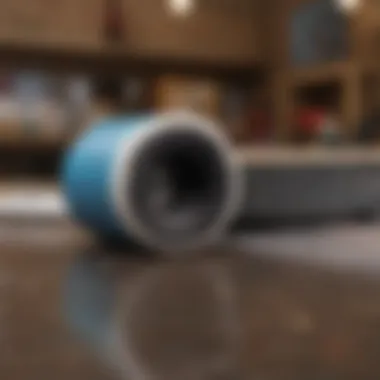
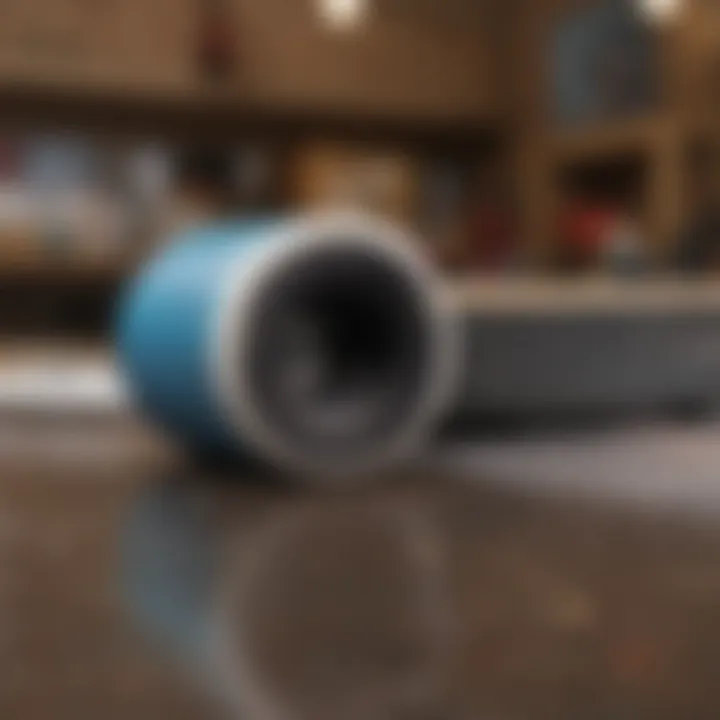
Grip tape wears out over time and understanding when to replace it is essential. There are key signs of wear that skaters must recognize.
Signs of Wear
Signs of wear can manifest visibly and functionally. Look out for the following:
- Fraying Edges: The edges of grip tape may begin to fray, losing their effectiveness.
- Loss of Texture: If the surface feels smooth or slippery, it indicates loss of grip.
Recognizing these signs early can help in improving performance. Replacing worn grip tape ensures better control while skating. This contributes to safety and overall enjoyment.
Performance Decline
Performance decline often relates to the quality of grip tape. When grip deteriorates, skaters may notice issues such as:
- Reduced Traction: Difficulty in performing tricks and maneuvers can be frustrating.
- Increased Slippage: A worn-out grip may lead to slips during rides, posing safety risks.
Understanding these signs allows skaters to take prompt action. Replacing grip tape at the right time can significantly enhance your skating experience.
Regular maintenance of your skateboard, including grip tape, is essential for optimal performance and safety.
Impact of Weather on Grip Tape and Decks
When considering the performance and longevity of skateboard gear, the impact of weather cannot be overlooked. Various environmental conditions play a significant role in how skateboard decks and grip tape perform. Understanding these effects helps skaters make informed choices when selecting equipment and maintaining it.
Effects of Moisture
Moisture is a primary concern for skateboard decks and grip tape. When skateboards are exposed to wet conditions, several issues can arise. Firstly, moisture can weaken the structural integrity of the deck. If a wooden deck absorbs water, it may warp or delaminate over time. This alteration can lead to a compromised riding experience. Grip tape also suffers under moist conditions.
A wet grip tape loses its tackiness, causing the rider's feet to slip during maneuvers. This loss presents a safety hazard for skaters, especially during tricks that require strong foot placement. Therefore, skaters should avoid riding in rainy conditions. Keeping the skateboard dry is essential for optimal performance. Regular inspection after exposure to moisture can help identify early signs of damage.
Sun Exposure and Durability
Sun exposure is another important factor affecting the durability of skateboard decks and grip tape. Ultraviolet rays from the sun can degrade materials over time. For skateboard decks, prolonged exposure can lead to fading in the graphics and weaken the wood. A compromised deck is less reliable during tricks and can result in unexpected breaks.
Grip tape is also vulnerable; consistent sun exposure may make it brittle. This brittleness contributes to peeling and can cause the grip tape to lose effectiveness. As the texture degrades, skaters might find reduced traction, increasing the risk of slips.
To mitigate sun damage, it is wise for skateboarders to store their gear in shaded areas when not in use. Additionally, applying protective coatings occasionally can enhance the lifespan of both the deck and grip tape.
"Understanding how weather affects skateboard gear can significantly enhance performance and safety. Skaters should take proactive steps to protect their equipment."
By paying attention to the impact of moisture and sun exposure, skaters can maintain their gear effectively. This understanding promotes a safer and more enjoyable riding experience.
Community and Culture of Skateboarding
The community and culture surrounding skateboarding play a critical role in defining the identity of the sport. This culture is not just about the act of riding a skateboard; it encompasses a lifestyle, including values such as creativity, freedom, and individualism. Various social interactions happen within skateparks, streets, and online forums. Skaters share experiences, techniques, and stories that enrich their understanding of the sport and its nuances. This collective knowledge significantly shapes how skaters choose their gear, especially regarding skateboard decks and grip tape.
Shared Knowledge and Practices
Shared knowledge acts as a foundation for the skateboarding community. Experienced skaters often mentor newcomers, offering tips on riding techniques and maintenance of gear. This exchange of information fosters an environment where all levels of skaters can improve their skills. For instance, the way one applies grip tape can vary from one skater to another based on personal preference and riding style. Most skaters will recommend exploring different brands and textures to find what works best.
Community-based events, like competitions or workshops, also encourage skill-sharing and camaraderie. These gatherings create platforms for skaters to discuss the importance of grip tape quality and skateboard deck materials. Understanding these elements not only enhances individual performance but also unites the community by promoting a shared set of practices and experiences.
Influence on Gear Selection
The cultural aspects of skateboarding impact how individuals select their gear. Emerging trends often lead skaters to adopt new brands that align with their personal style or values. Skateboard brands like Element and Santa Cruz are known not only for their products but also for their cultural relevance within the skating community. Collaborations with artists and skateboarders create unique designs, appealing to skaters' desire for self-expression.
Social media platforms, especially Reddit and Facebook, have made it easier for skaters to discuss gear options. These platforms often feature reviews and recommendations from fellow enthusiasts. As such, skaters tend to rely heavily on communal insights when purchasing their decks and grip tape. They consider not just performance metrics but also how well a product resonates with their culture or social identity.
In summary, understanding the community and culture of skateboarding allows for a deeper comprehension of not just the sport but also the decisions made by its enthusiasts. Making informed choices about deck and grip tape is directly influenced by the established practices and values within this vibrant community.
Finale
The conclusion serves as a vital part of this article, aiming to encapsulate the main insights about skateboard decks and grip tape. It highlights how each component interacts to enhance performance and safety during skating. The examination of materials, designs, installation techniques, and maintenance wraps everything together into a holistic view of skateboard preparation.
A well-chosen skateboard deck, when paired with appropriate grip tape, can significantly influence skaters' experiences. The advantages include improved traction, safety, and selected aesthetics. This relationship highlights the need for skaters to not just select random equipment but to consider their style, skill level, and the type of terrain they frequently skate on.
In particular, considering weather conditions proves to be a crucial element. Moisture can degrade both the deck and grip tape, while excessive sun exposure can result in brittleness and loss of effectiveness. Understanding these factors empowers skaters to make informed decisions, prolonging the life of their gear.
"Choosing the right equipment is not simply about preference; it is an essential part of maximizing performance and enjoyment in skateboarding."
By following the guidelines provided, skaters can elevate their game while also ensuring safety. Making thoughtful choices regarding both the deck and grip tape can ultimately transform a skater's experience on the board, leading to greater satisfaction and achievement.
Recap of Key Points
To summarize, several key points have been discussed throughout the article:
- Materials: Understanding the types of materials used in decks (such as maple, bamboo, and plastic) informs choices.
- Grip Tape Functionality: Grip tape is crucial for safety and performance, preventing slips during tricks.
- Variants: Different types of grip tape exist, including standard and finer grit options, each serving unique purposes.
- Maintenance: Regular cleaning and timely replacement of grip tape can ensure sustained performance and safety.
- Environmental Effects: Skaters should account for weather factors affecting both the grip tape and the deck.
Final Thoughts on Choosing the Right Gear
Deciding on the right skateboard and grip tape combination is not just a matter of personal preference but hinges on various elements. The unique riding style, experience level, and the type of terrain all play significant roles in this decision process.
For beginners, focusing on decks that offer stability and grip is essential. As skills progress, skaters may opt for more advanced setups that allow for greater maneuverability and trick execution.
Skaters should continually assess their equipment and make adjustments based on their personal experiences and changing conditions. This proactive approach leads to better performance and enhances the overall enjoyment of the sport.
Staying informed about the latest trends, materials, and best practices in skateboard gear will help you stay at the top of your game. Ultimately, thoughtful choices in skateboard gear will lead to more enjoyable and successful skating experiences.







